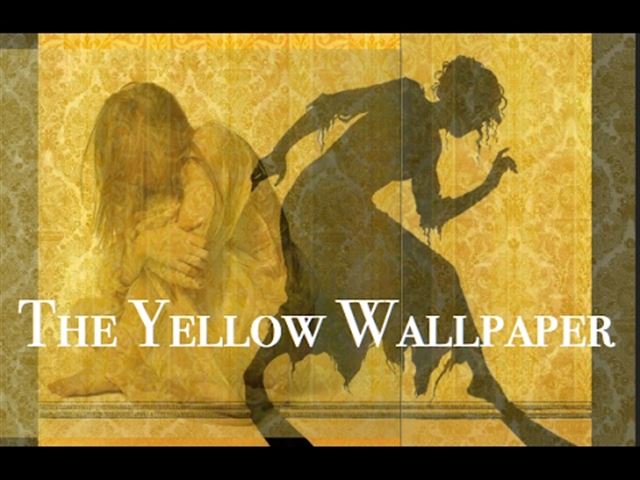The Yellow Wallpaper is a short story penned by American author Charlotte Perkins Gilman. This story was first published in 1892 and is now considered one of the most important early works that focused on the physical and mental illness of women from the 19th century. Written as a collection of journal entries, Gilman presents a female character married to a physician.

Through narration, readers follow the treatment of this woman by her husband during months of renting a mansion during the summer. Her partner claims she has temporary nervous depression, a diagnosis that was quite common among women of that time. Confining the woman to an upstairs nursery to promote rest, Gilman’s work is packed with symbolism. Here we offer an analysis of various symbols Charlotte has used to portray 19th-century roles of women.
The Yellow Wallpaper
As a key symbol, the narrator is both fascinated as well as disgusted by yellow wallpaper in her confined space and takes to studying patterns and stains on walls. Her examination of patterns is symbolic of someone that is trying to find a reason for a patriarchal society. While staring at a pattern, a female appears trapped behind the yellow paper. This can be seen as the narrator’s way of looking for an escape from a sexist world.
As her isolation in this room continues, she becomes obsessed with patterns within the wallpaper. She sees patterns that include bars, where a woman trapped is looking back at her. When it all comes to an end, she is found tearing the paper in an attempt to free the barred female, representing our narrator’s desire to be freed from such constraints.
Overall, literary themes of love, insanity, and tragedy are present throughout this story, similar to modern adaptations of Shakespeare plays like Hamlet. Characters in The Yellow Wallpaper and in Hamlet are driven to insanity, losing any form of self-expression that was once had.
An Estate or Prison?
Isolation is reflected in an estate that consists of an isolated house and many gardens. Boundaries around rooms and the entire estate stand for smaller spaces in which our narrator has little emotional freedom. A former nursery used for the narrator’s room has bars on windows. It is often customary for a house to represent a safe and secure place for a woman, allowing for a space to transform and release self-expression.
With this story, the house and estate are not her own and she has no desire to be in it, declaring it “haunted.” While the beauty of this house is acknowledged, she finds something strange about it. Instead of promoting personal freedom, it acts as a cocoon for any transformation that could possibly take place. One characteristic, the widows, is one that typically represents freedom along with possibilities. In this case, it is not a gateway to freedom but rather something that the narrator sees as holding her in, remaining controlled.
Meaning of The Room
The room symbolizes emotional and physical control. Limited in motions and segregated from life outside, the narrator is stuck here, similar to being in a prison cell. This room places harsh limits on any freedom of choice. Loss of self-expression caused by oppression is a topic of many The Yellow Wallpaper essays on StudyDriver. Barred windows stand for confinement and this room is seen as a place for medical control and surveillance, indicating how men were in control and women were weaker sex. Within this room are pieces of furniture, including a nailed bed. Since it is not moveable, it signifies imprisonment and confinement.
Even the atmosphere is negative, with no light of hope for any active or normal life. This causes her to become more depressed. Instead of enjoying her environment, she becomes a victim. While isolated within this single room, she starts to experience senses of alienation, suffering, and estrangement. The fact that this was once a nursery stands for her overall status in society
Legally speaking, she is no more than a child, with no legal rights and no say in how things are done. With a strong desire to be heard by her male partner, she ends up feeling helpless and shadowed by the supremacy of her husband. During this period, females were directed how to act, what to do, even what to say by their spouses. Free-will and incivility were not things that were widely accepted among females.
Conclusion
Female oppression was one of the main problems when this was written. Through symbolism, Perkins is able to convey her ideas and thoughts while providing a compelling and fascinating story of a female struggling to cope with sexism and psychological health issues. As an individual restrained by a powerful husband, the narrator is confined, stripped of self-expression, and eventually suffers from insanity, all during a period when females were unheard, controlled, and dominated by men.